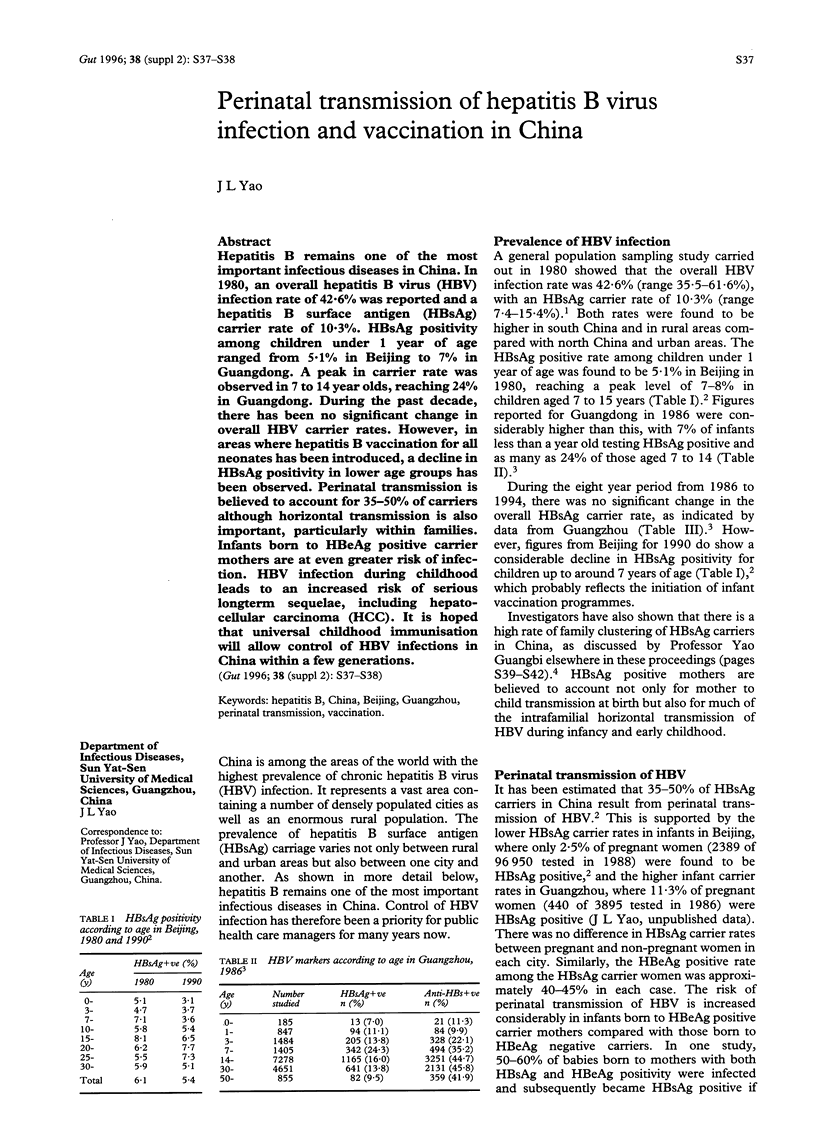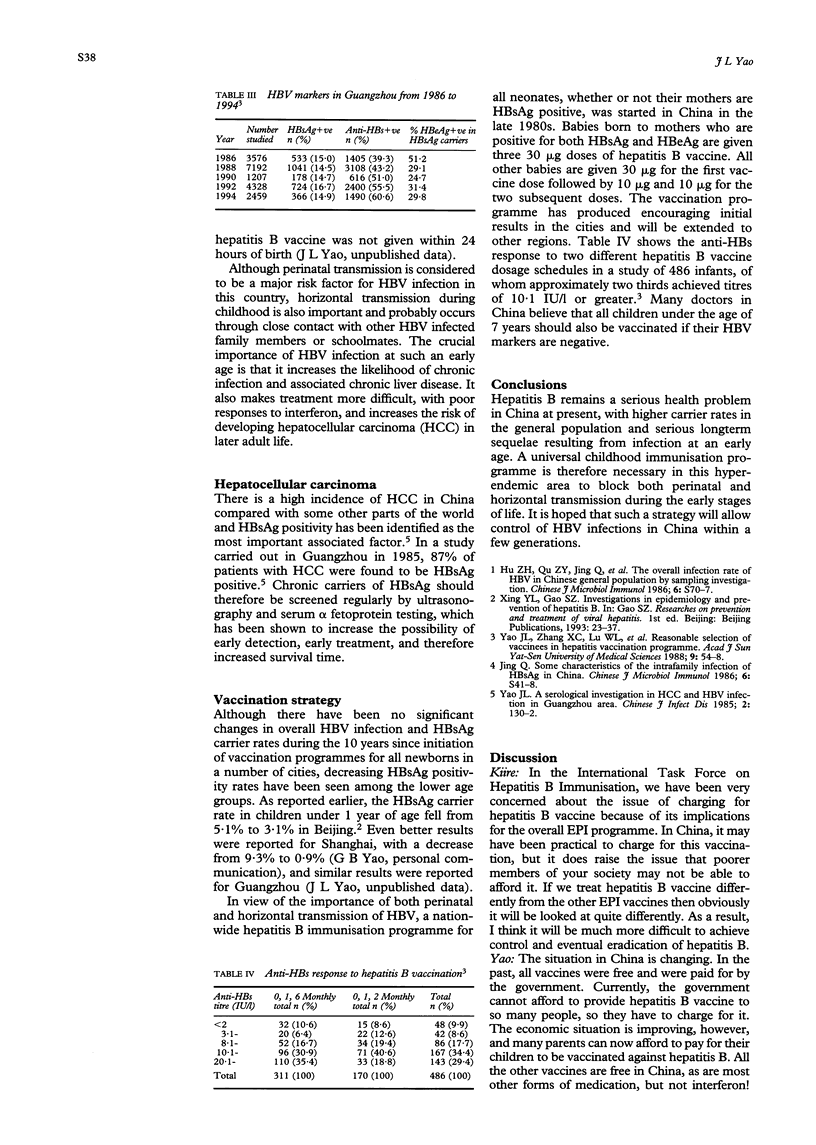Abstract
Hepatitis B remains one of the most important infectious diseases in China. In 1980, an overall hepatitis B virus (HBV) infection rate of 42.6% was reported and a hepatitis B surface antigen (HBsAg) carrier rate of 10.3%. HBsAg positivity among children under 1 year of age ranged from 5.1% in Beijing to 7% in Guangdong. A peak in carrier rate was observed in 7 to 14 year olds, reaching 24% in Guangdong. During the past decade, there has been no significant change in overall HBV carrier rates. However, in areas where hepatitis B vaccination for all neonates has been introduced, a decline in HBsAg positivity in lower age groups has been observed. Perinatal transmission is believed to account for 35-50% of carriers although horizontal transmission is also important, particularly within families. Infants born to HBeAg positive carrier mothers are at even greater risk of infection. HBV infection during childhood leads to an increased risk of serious longterm sequelae, including hepatocellular carcinoma (HCC). It is hoped that universal childhood immunisation will allow control of HBV infections in China within a few generations.
Full text
PDF



